Lush, Foodie Abundance in a Small Urban Garden
“I was spending a lot of money on organic food,” Esiah Levy says, explaining how he came to create his super-productive garden in Croydon, south London. “So I set about finding alternative sources of organic food. There aren’t many farmers markets near where I live, so the next logical step was to learn how to grow it myself.”
While juggling his day job, Levy attended Capel Manor College in London’s Regent’s Park, learning how to cultivate fruits and vegetables without plant foods or fertilizers, using the innovative no-dig technique. “You don’t have to dig the soil to grow produce,” Levy says. “All that does is expose it to more weeds. This method focuses on the soil and its ecosystem by layering the ground with organic materials, such as horse manure and coffee grounds.”
Levy used this approach to transform his small back garden into a foodie paradise in just two years. It now feeds him and his son year-round, and demands very little time and effort to maintain. Its success encouraged Levy to set up an edible gardening design and consultancy business to help others grow produce in the urban landscape. “The best thing is,” Levy says, “anyone can do this!”
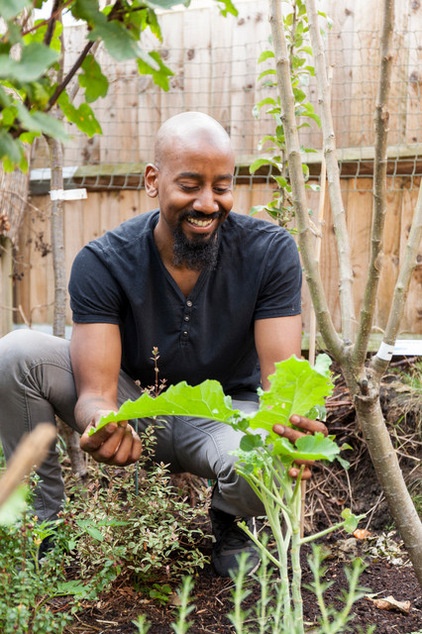
Garden at a Glance
Who lives here: Esiah Levy of Urban Edible Garden Design and his 2-year-old son, Mehki
Location: Croydon, south London
That’s interesting: The garden measures just 15 by 9 feet (4.5 by 2.7 meters) yet includes 23 trees
Levy grows an astonishing array of fruits and vegetables in his garden, from the kale pictured here to turnips, beets, carrots, soft fruit (including raspberries and black currants) and several kinds of apples, pears and more unusual orchard fruits.
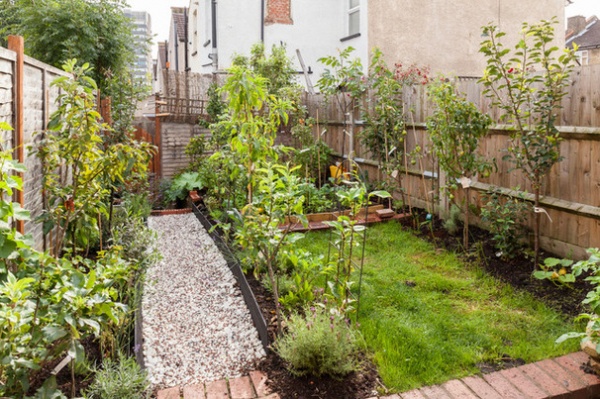
“I have 23 trees in this garden,” Levy says. “It’s an orchard shape, with fruit trees along the walls and down the path, soft fruit growing beneath and a raised veg bed at the back.”
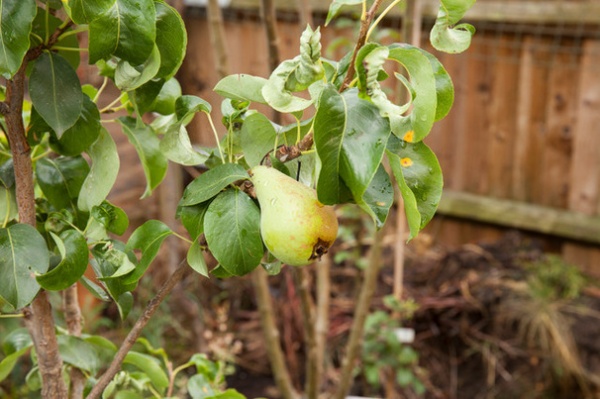
This Williams pear is just one of the varieties Levy grows. “My son, Mehki, just walks out into the garden and picks fruit off the trees to eat,” he says. “His favorites are Granny Smith apples, rhubarb, spring onions and blueberries.”
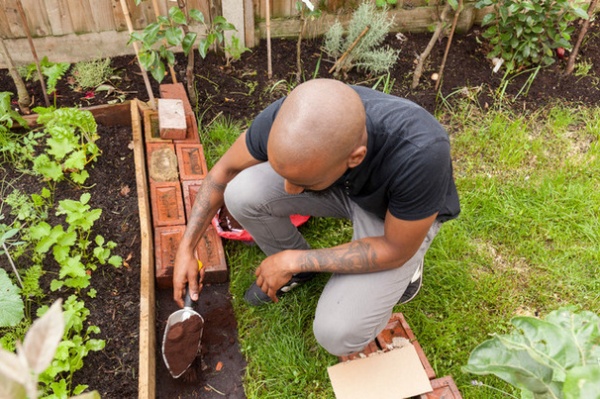
Levy prepares another section of ground using the no-dig technique. Rather than dig into the lawn to create a bed, he covers the grass with a layer of horse manure, then cardboard, then coffee grounds, building up layers of organic material.
“The whole point with no-dig is that there’s no extra labor, and you’re not destroying the ecosystem in the ground,” Levy says. “What you grow is just as good as if you were using plant feed, and you get far fewer weeds, too.”
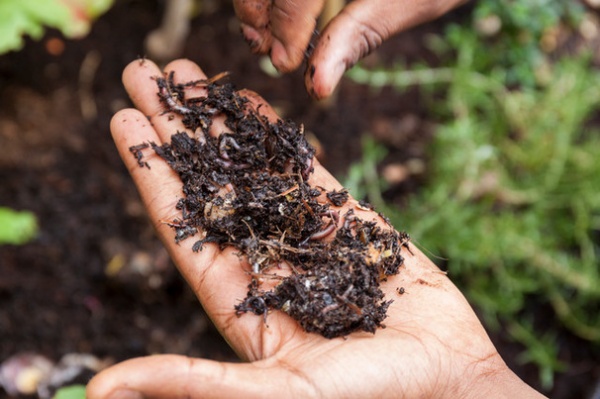
A handful of soil from Levy’s garden is wriggling with worms. “That’s what you should see when you dig into soil,” he says. Worms are essential to the health of the soil, providing aeration and drainage, and their castings are packed with beneficial nutrients. “You can buy worms online if you are planting out a planter,” he says, “but if you are creating a veg patch on the ground, just add lots of horse manure and they will find their way in.”
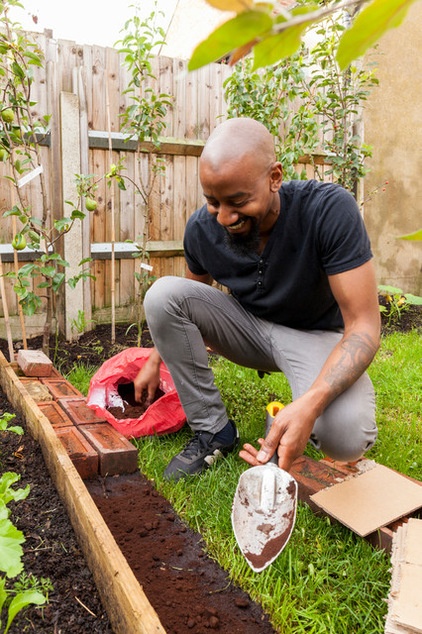
Levy has added his own twist to the no-dig technique and likes to lay bricks on any newly prepared patch. “It’s good to put something heavy on top,” he says. “The worms are happy under the bricks, and there is no light getting to the grass and weeds. I only leave the bricks on for about three weeks, until a bamboo stick can be pushed in with no effort, like a knife through butter, which normally would be difficult, as grassed areas are very compacted.”
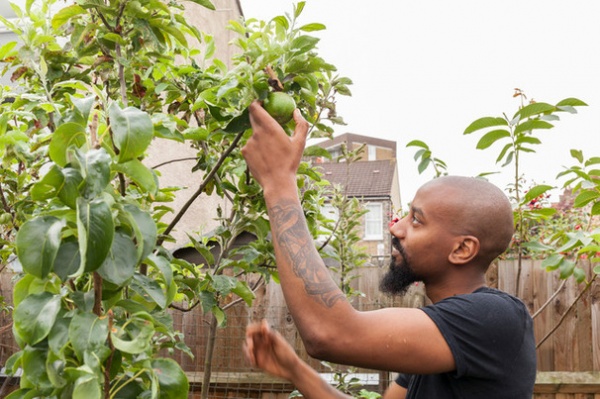
Levy’s method of gardening is also cost-effective. “I’ve always said gardens shouldn’t cost money,” he says. The organic materials Levy uses to layer the soil and condition it are sourced locally and often free. “Call Starbucks and grab some coffee grounds. Go to your local riding stable and get some manure,” he says. “They want to give this stuff away!” He also uses cocoa husks, a by-product of the chocolate industry. “I go to the Mast Brothers, a chocolatier in Shoreditch [east London] for mine,” he says.
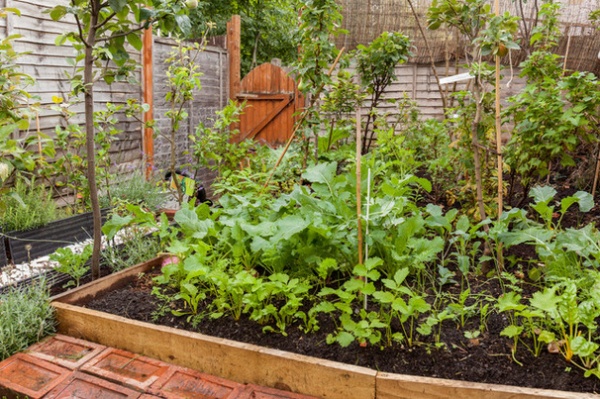
The raised bed at the far end of the garden is bursting with vegetables, from kale and carrots to celeriac and turnips. “You might have to buy seeds and fruit trees initially, but after that you shouldn’t have to spend too much to start your garden,” Levy says. You can gradually become more self-sufficient, too. “Once you have a crop of carrots, if you grow 50, leave 10 to go to seed,” he says. “There are your seeds for next year.”
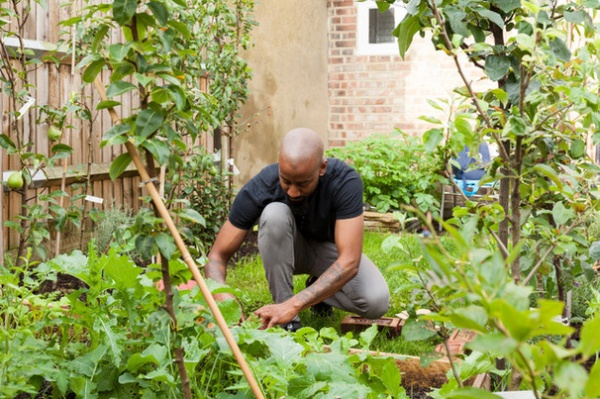
For Levy, the benefits of the no-dig technique stretch well beyond the quality of soil it creates and the abundance of fruit and vegetables. “It’s also easy and quick,” he says. “I’ve done hardly any work in the garden this year; all I’ve done is lay down some mulch. I did that last September, and I’ll do it again around now, as it takes about a year to break down and reduce.”
This is gardening for the time-pressed and space-poor urban dweller. “Anybody can do it!” says Levy. “If you live in a flat with only a balcony, put a plant pot out on it. Add some worms, some coffee grounds or cocoa husks, and some mulch, and then feed the soil with your own fruit and veg scraps. Simple.”
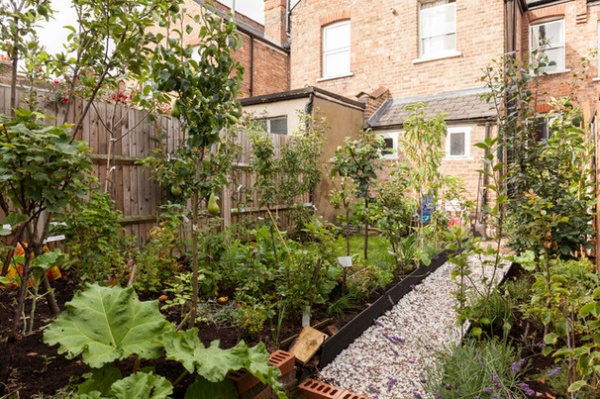
From the far end of the garden, you can appreciate the abundance of plants growing here. “As this garden is actually going to produce food for me, it has to reflect the natural ecosystem of a forest,” Levy says, “with a combination of tall and low-growing plants layered up, rather than a single fruit tree.” This layered approach cuts down on the need to water, too. “Some plants retain moisture, and those plants that provide ground cover keep the soil moist, too,” Levy says. “It saves you time and effort.”
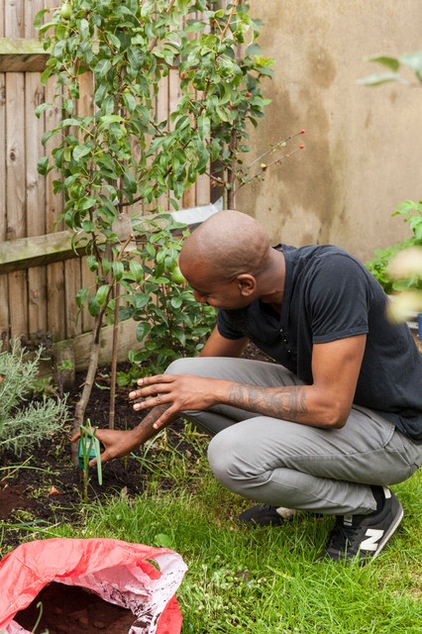
Levy has planted lavender throughout his garden too. “It’s for the bees,” he says. “Lavender attracts them, and they then help to pollinate the fruit trees. It keeps them going and means I always get fruit.”
How to Design a Garden for Native Bees
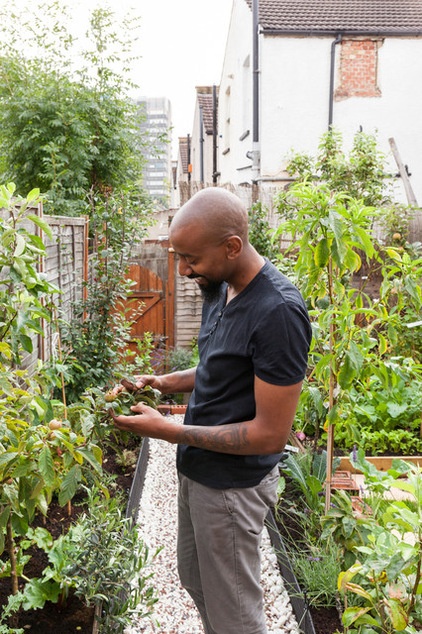
“What I love about gardening is the freedom,” Levy says. “You can grow whatever you want! You discover very quickly that there isn’t just one type of apple, pear or carrot. Growing your own opens your mind to the fact that the food you are offered in a supermarket is only part of the story.”
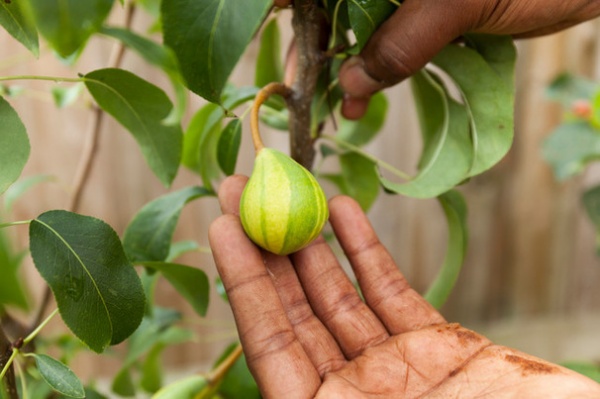
In addition to familiar apple and pear varieties, such as Williams and Granny Smith, Levy enjoys growing more unusual fruits, including small, hardy kiwis, serviceberries and these pretty ‘Humbug’ pears. “This variety is from Ukraine, so it’s hardy and can handle the cold,” he says. “It flowers twice a year, so you get a double yield of fruit.”
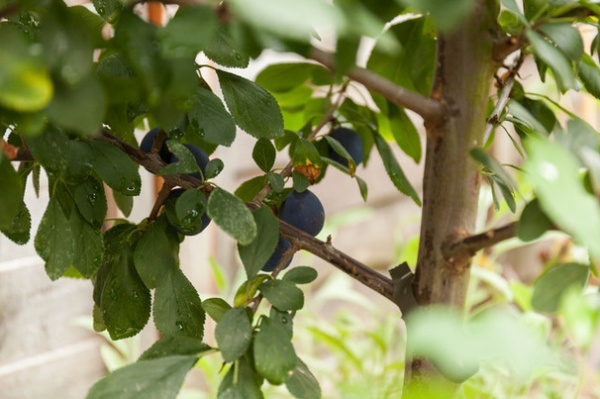
There’s a huge range of fruit trees growing in Levy’s garden, including unusual varieties such as medlar and this damson (a plum-like fruit). “You don’t need giant trees,” Levy says. “You can get dwarf trees measuring 2 feet [about 60 centimeters], so even if your garden is small, you can still have apples, peaches and plums.”
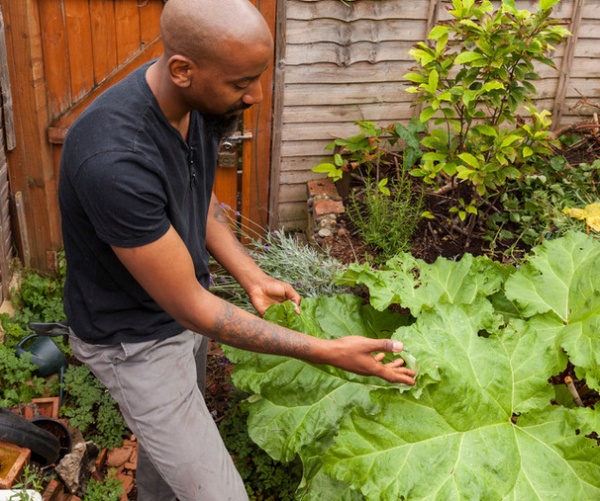
Three rhubarb plants are thriving at the back of the garden. “I can’t even explain how big they’ve grown this year!” Levy says.
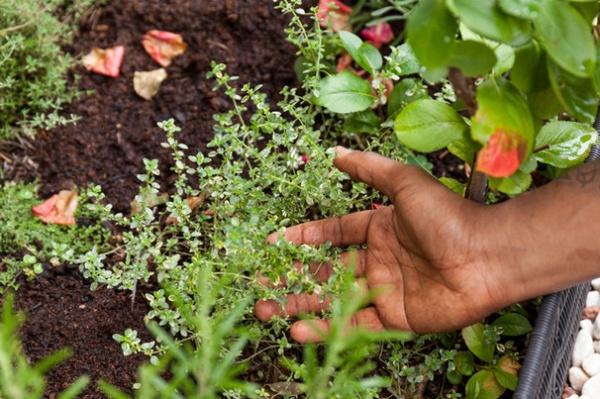
If you are just beginning to cultivate your garden, Levy recommends picking a small patch to convert for growing edibles. “Do your research around your patch and how much sun it gets,” he says, “then go online and get advice from other urban gardeners on what you can do there.”
Levy suggests that a good way to start is by growing herbs. “They are easy to grow,” he says, “and from there, in my opinion, you should try potatoes. Even if you only have space for a pot, you can get 25 to 30 potatoes growing in a 10-liter [about 2½-gallon] planter.”
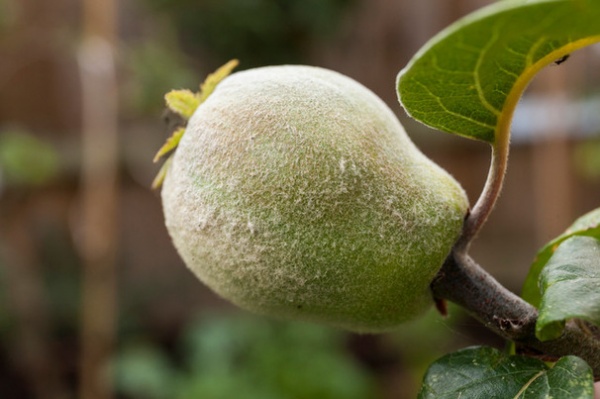
A Russian quince tree is thriving in Levy’s garden. “This is an ‘Aromatnaya’, and it’s a heavy bearer,” he says. “My tree is only 3 years old, and I have nine fruits on it. If left on the tree for a long time, the fruit becomes tender enough to eat raw.”
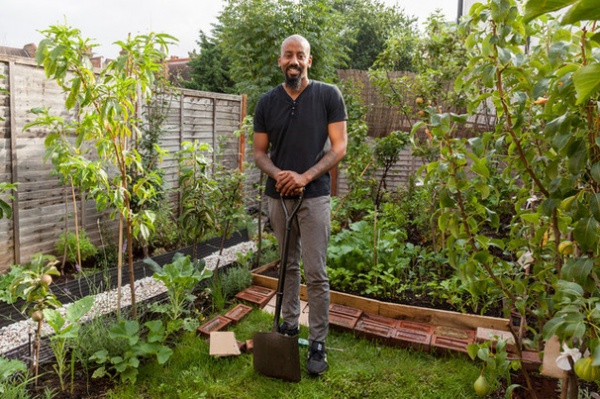
To feed the soil, Levy regularly puts back the fruit cores and vegetable leaves from his produce to nourish it. “If you dig up a turnip, chop off its leaves, then put them back in the soil,” he says. “You take out, then you give back.”
Browse more stories about edible gardens












